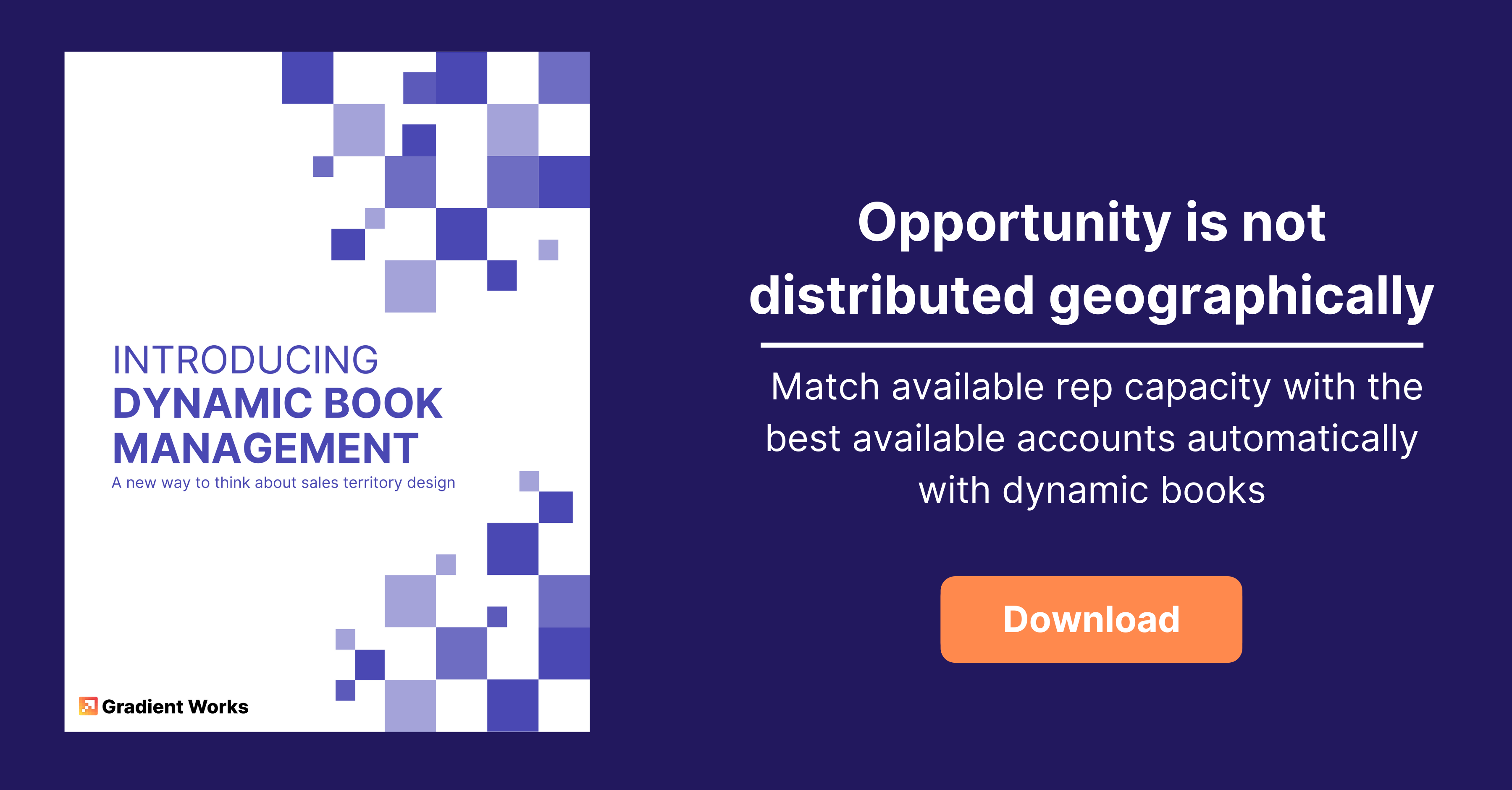SDRs are experts at keeping a bunch of different plates spinning. Balancing inbound and outbound leads while reaching for attainment numbers is an unenviable task. Solving for the balance calls for a deep look into the process of how leads are distributed and the rules of engagement that govern them. See our 3 tips for balancing reps' workloads, including a look at dynamic books, a modern alternative to traditional sales territories.
Sales imbalance issues
The imbalance between inbound and outbound accounts for SDRs creates several headaches for your team, including imbalanced attainment. First, the creation of the sales hoarder. An SDR has been assigned accounts over the years, and when a new inbound inquiry comes in, it’s automatically distributed to that rep. Now, chunks of your TAM are “locked up” in their book and not available to the rest of your team.
Second, in addition to hoarding, reps have trouble with capacity. Each inbound inquiry routed and outbound assigned has an average handle time (AHT). With only 8 hours in the work day, your rep has only so much time to research and outbound. They immediately respond to the inbounds and the outbound accounts go unworked because there simply isn’t enough time in the day. This leads to the problem we hear about the most, data quality.
Dusty data is the precursor to the dreaded “dirty data”. The CRM had good data and intent signals, but over time, a high influx of inbound or outbound leaves accounts untouched. Those contacts leave the organization or find a competitive product. The opportunity fell through the cracks.
Solving inbound-outbound imbalance
The actual balance between inbound and outbound account distribution is going to be different based on the volume of leads, so it’s unrealistic to think every company can set up a simple 80% outbound, 20% inbound rule for SDR’s to work. That being said, there are 3 ways to look at solving your imbalance:
1. Separate them in your SLA/RoE
The rules of engagement probably focus on inbound response times and most reps will prioritize that number to stay in the inbound rotation. This leaves your outbound quickly abandoned for inbound activity. Instead, separate the activity goals and KPIs for inbound and outbound. Not sure what the average might be? Check out our collection of KPIs for SDR teams. If the call goal is 80 dials, designate if that is total or just outbound. Then, use the inbound inquiries to top off the outbound. If you are unsure how much activity your SDR can complete during a day, use our handy calculator.
2. Break up the day/week
This strategy is seen often in real estate and other call-heavy industries with an SDR team. Engagement during the day is key. Having sub-sections of the teamwork inbound in the morning and outbound in the afternoon ensures both sides of the job are addressed.
3. Dump geographic territories and pod models
Unless there is a language, cultural, major timezone (Los Angeles to Great Britain), or true geographic barrier (like fast food franchise locations), does it really matter if an SDR based in Florida works an account in Michigan? Geographic territories are one of the biggest reasons for imbalanced attainment. The amount of high-potential accounts in a large city in the U.S. will likely be bigger than in rural Nebraska (unless it’s corn). If one SDR, for example, is covering New York and one is covering Nebraska, you likely have too much work for one rep and not enough for the other.
The same issue arises in the SDR-AE pod model. A high-performing SDR can feed multiple AE’s. If they are converting at a high rate but there are not enough AEs to cover, opportunities are lost. Another AE-SDR pod with lower TAM may be struggling, not to convert, but with the famine of far fewer “at-bats”.
How to create a balanced system with dynamic books
Dynamic book management is a modern way to allocate accounts to sales reps. Instead of relying on static territories, dynamic books continually match rep capacity with the best available accounts. Using fit and timing signals, the highest potential accounts are always in front of your sales team, increasing rep productivity and attainment. Learn more about how to create a dynamic books process with Gradient Works.





